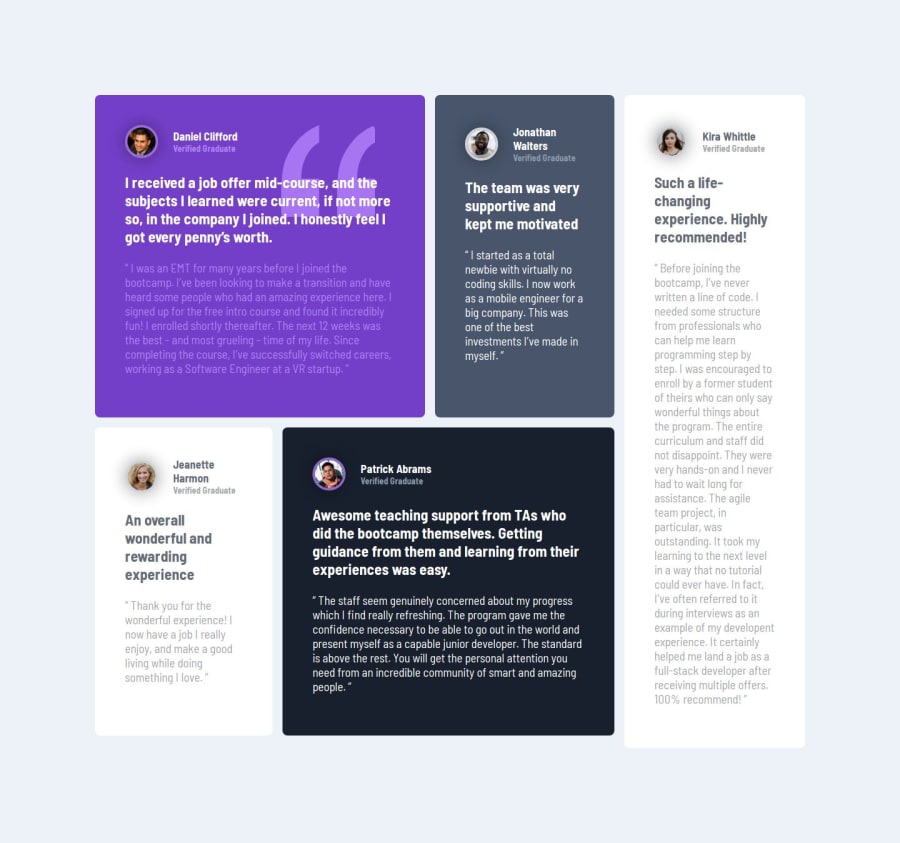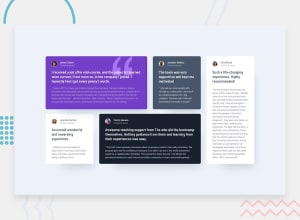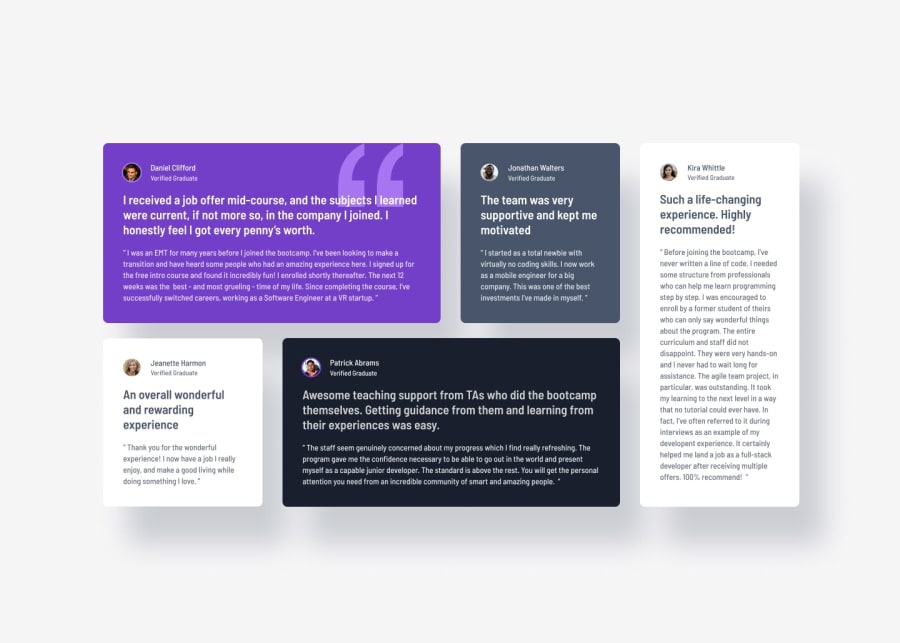
Design comparison
Solution retrospective
I’m proud of creating a responsive and visually appealing testimonials grid that works well on all devices. Next time, I’d plan the layout better, test on more devices, and add animations to make it more engaging. I’d also involve feedback earlier to improve the design.
What challenges did you encounter, and how did you overcome them?I faced challenges in making the grid fully responsive and ensuring perfect alignment across screen sizes. I overcame this by reading documentation and experimenting with different CSS techniques. Maintaining consistency in styling was another challenge, which I solved by organizing the code better and reusing styles effectively.
What specific areas of your project would you like help with?I’d like help with improving the responsiveness further, especially for smaller devices. I also want guidance on adding subtle animations to make the section more interactive and tips on optimizing the code for better performance.
Please log in to post a comment
Log in with GitHubCommunity feedback
No feedback yet. Be the first to give feedback on Nisha Kumari's solution.
Join our Discord community
Join thousands of Frontend Mentor community members taking the challenges, sharing resources, helping each other, and chatting about all things front-end!
Join our Discord
